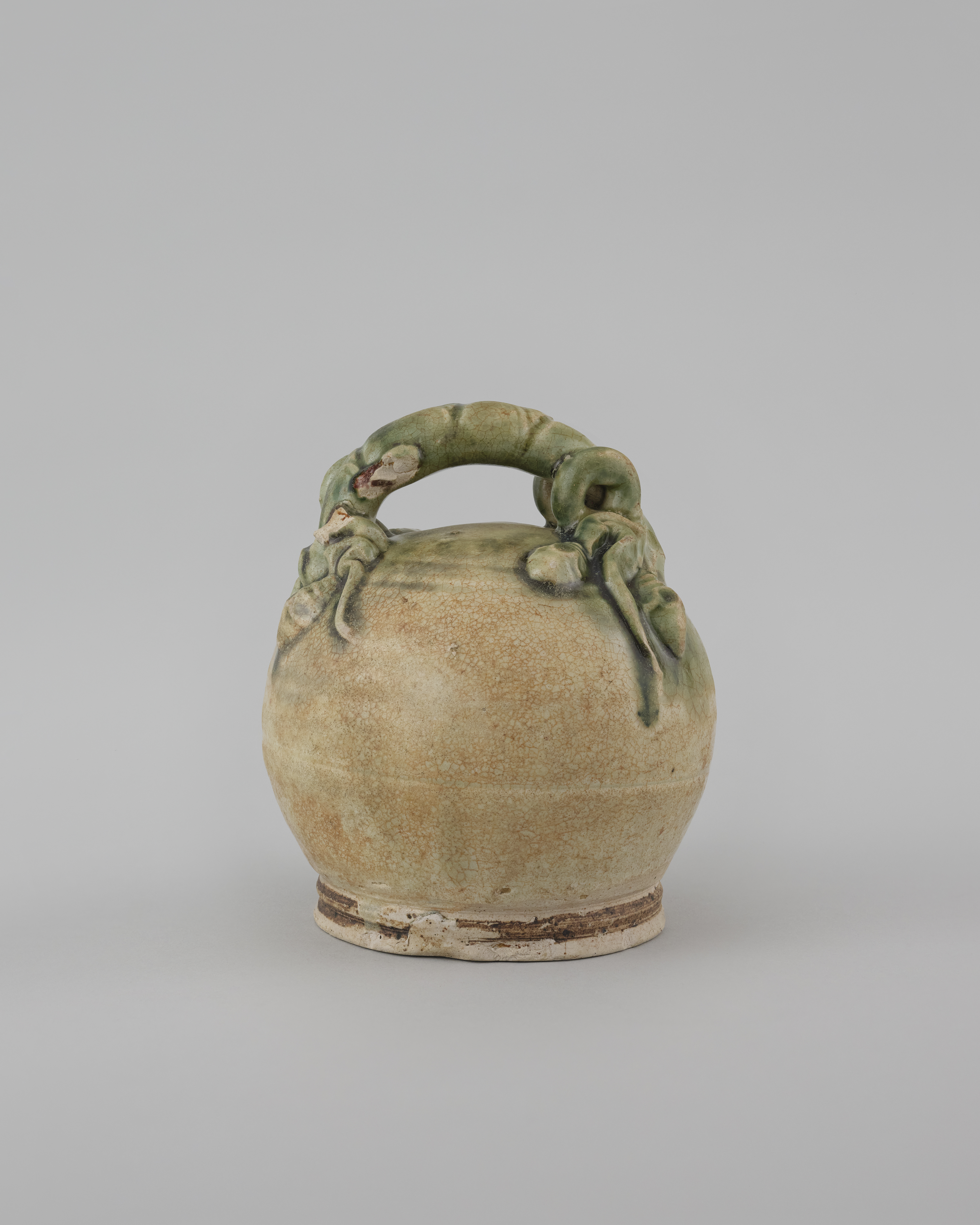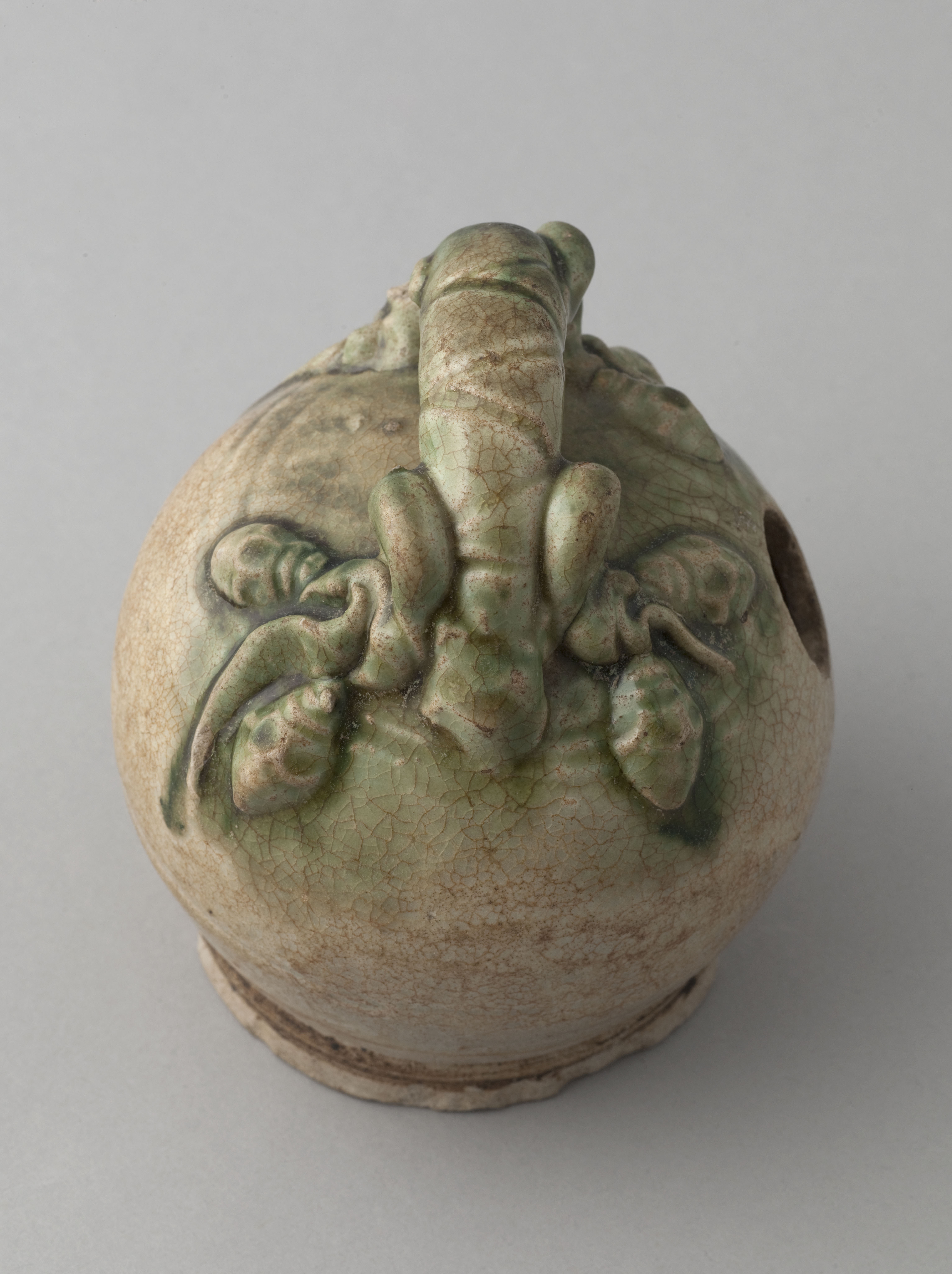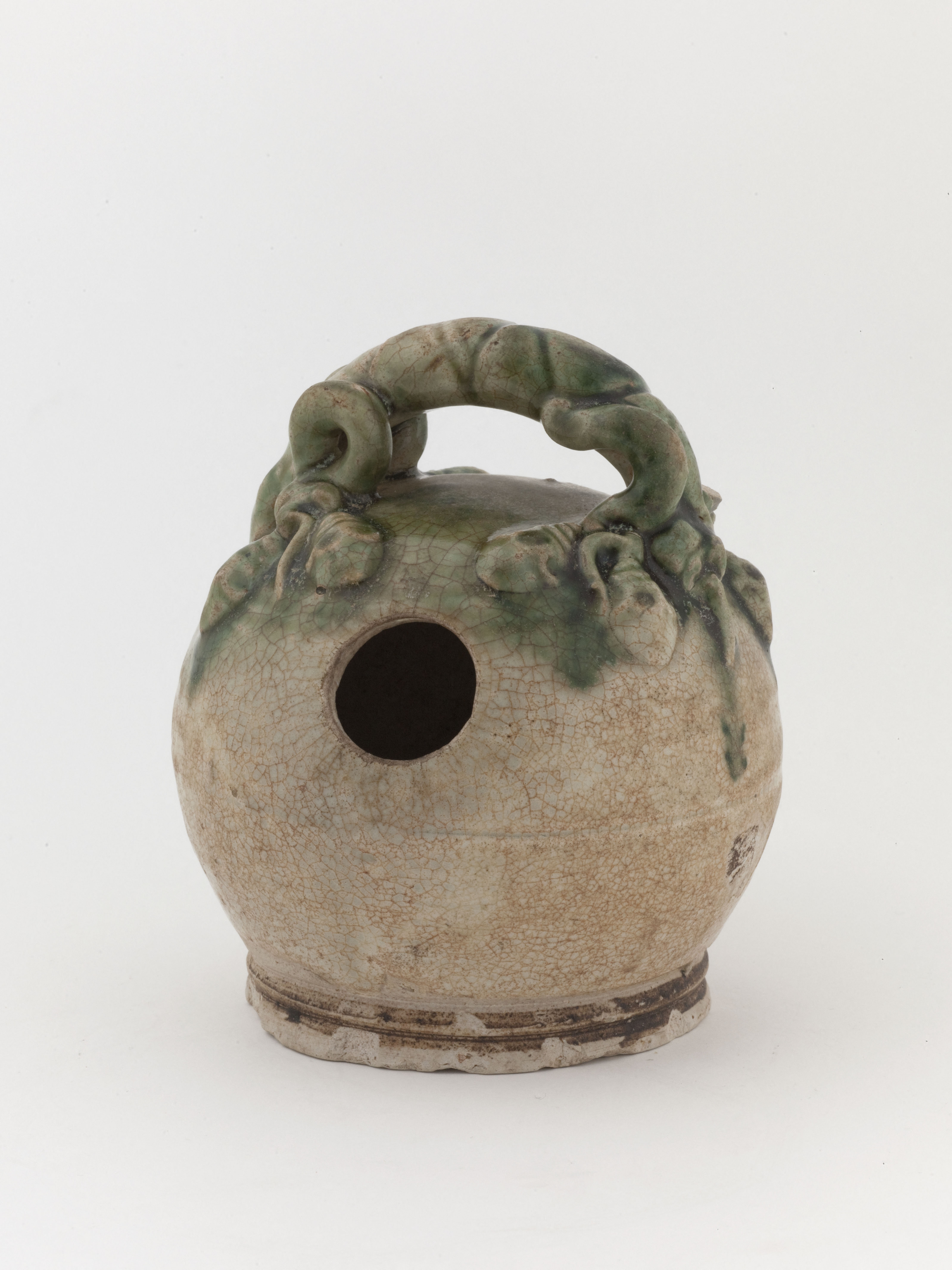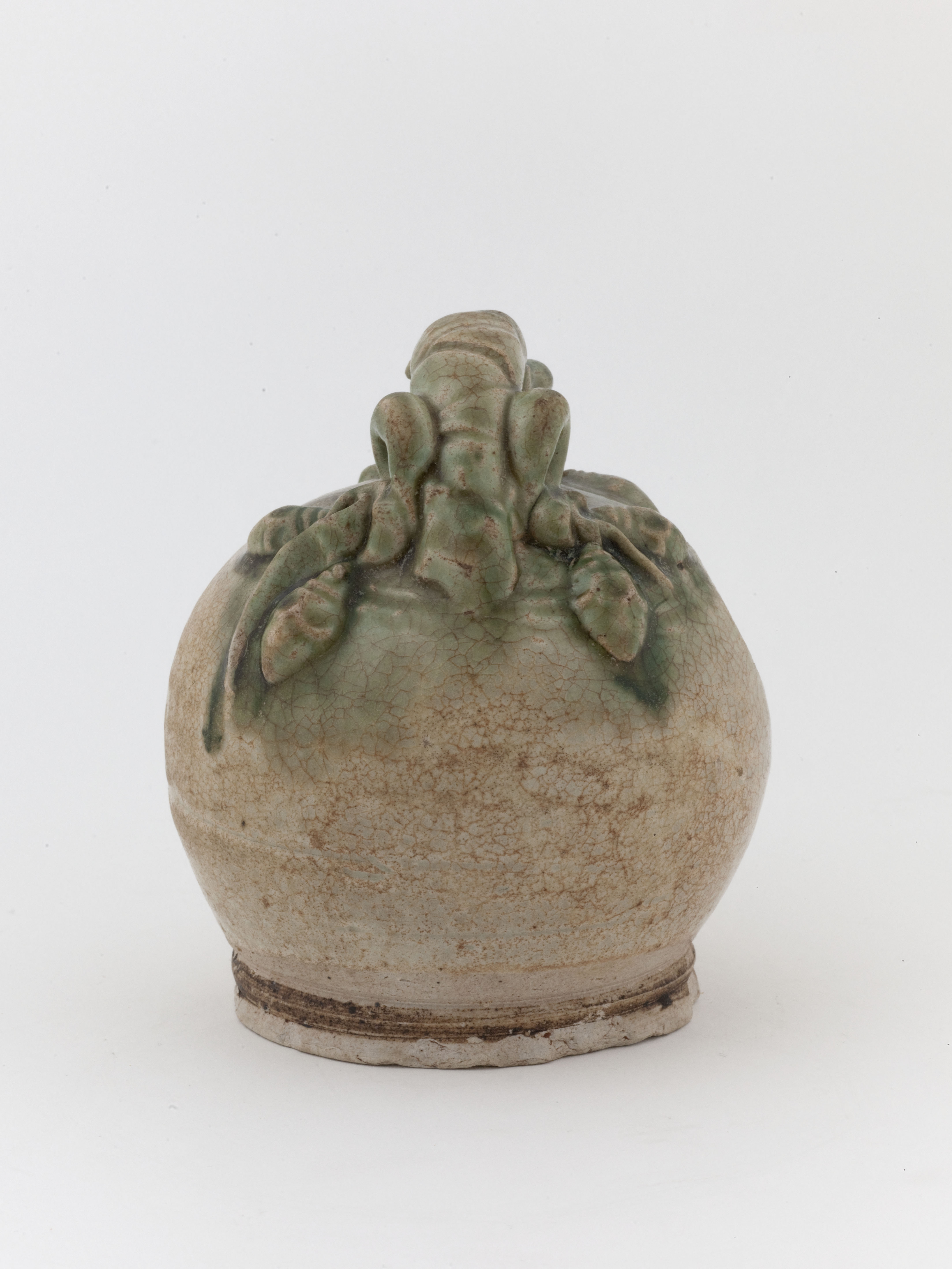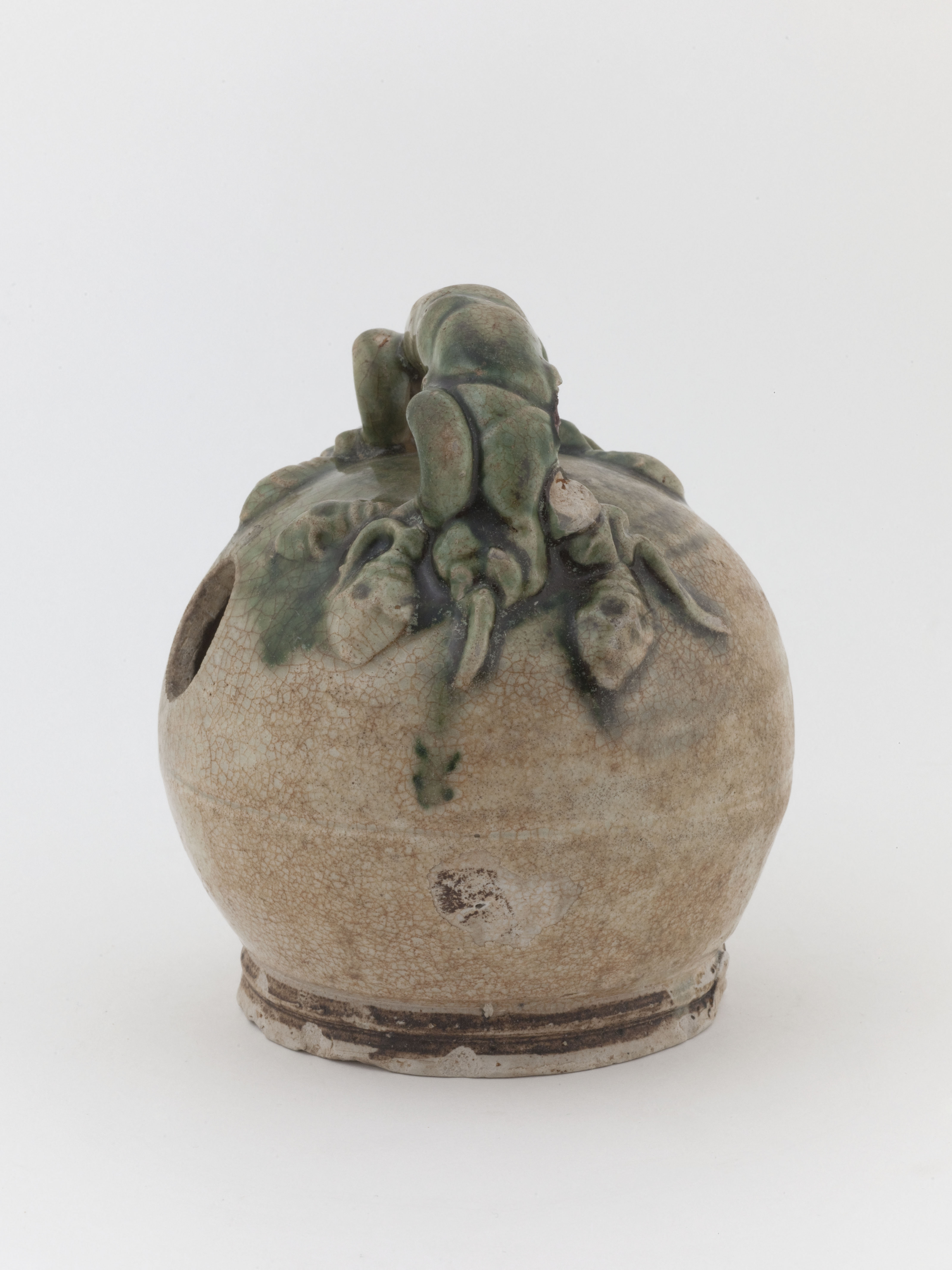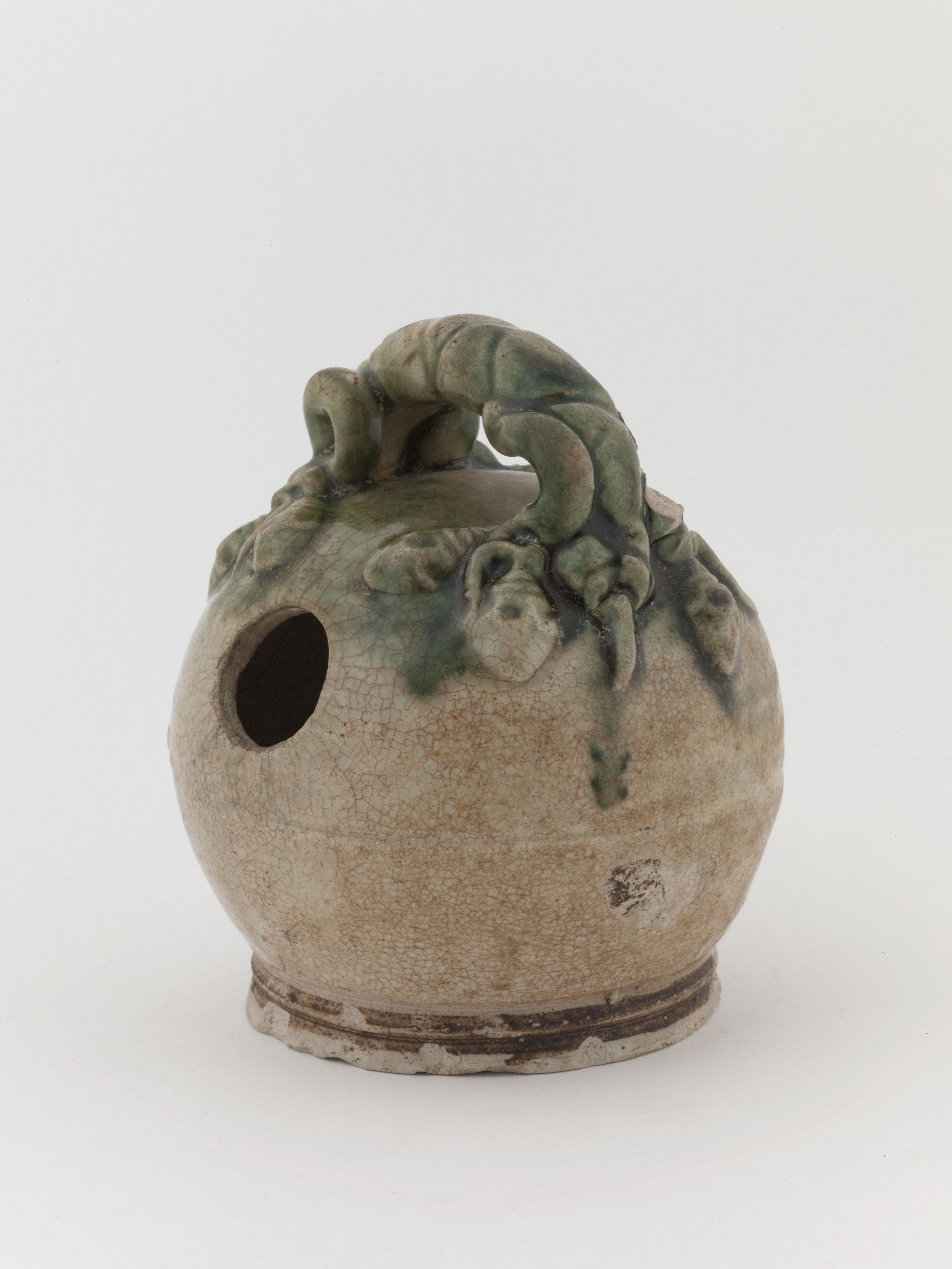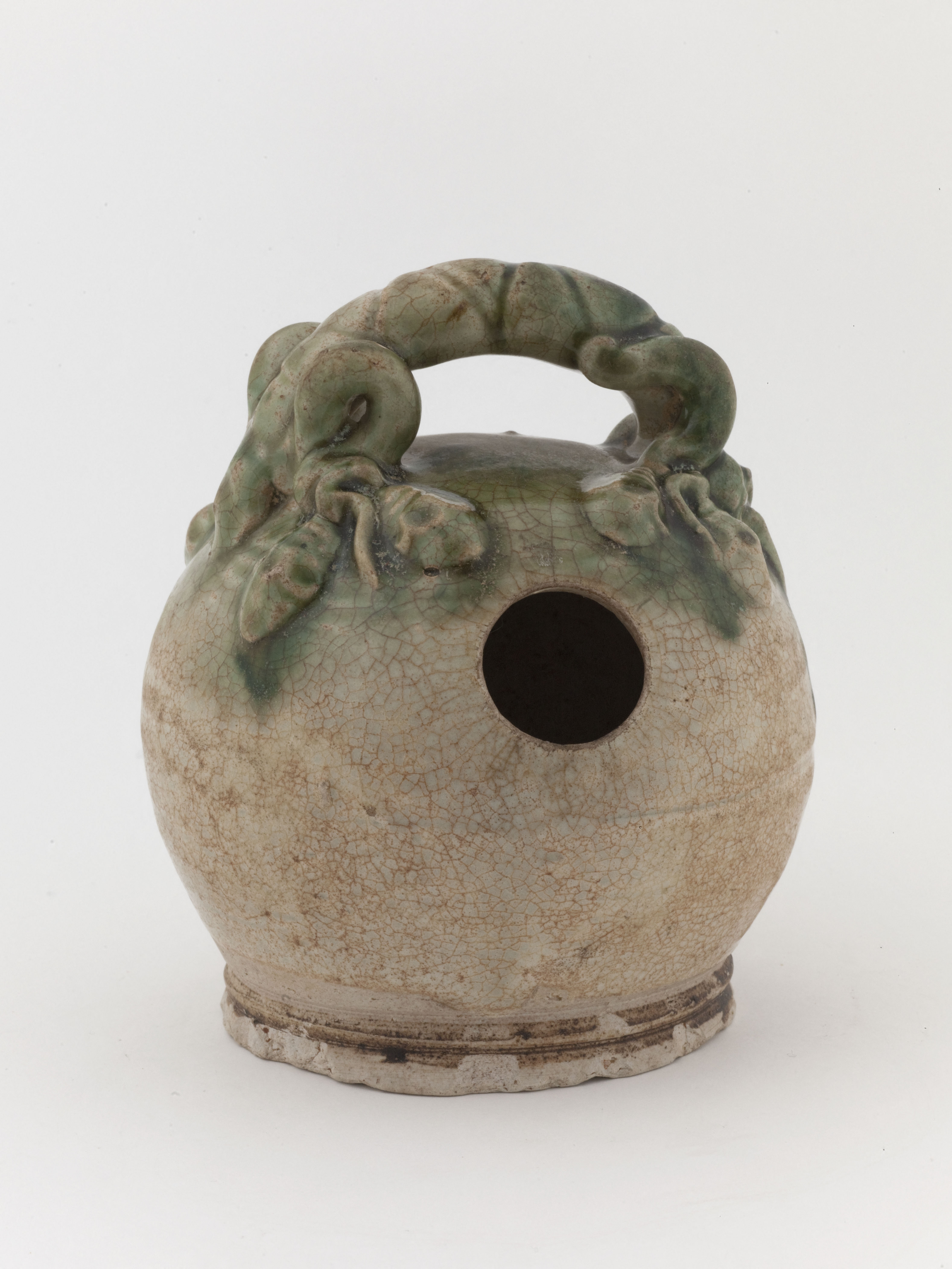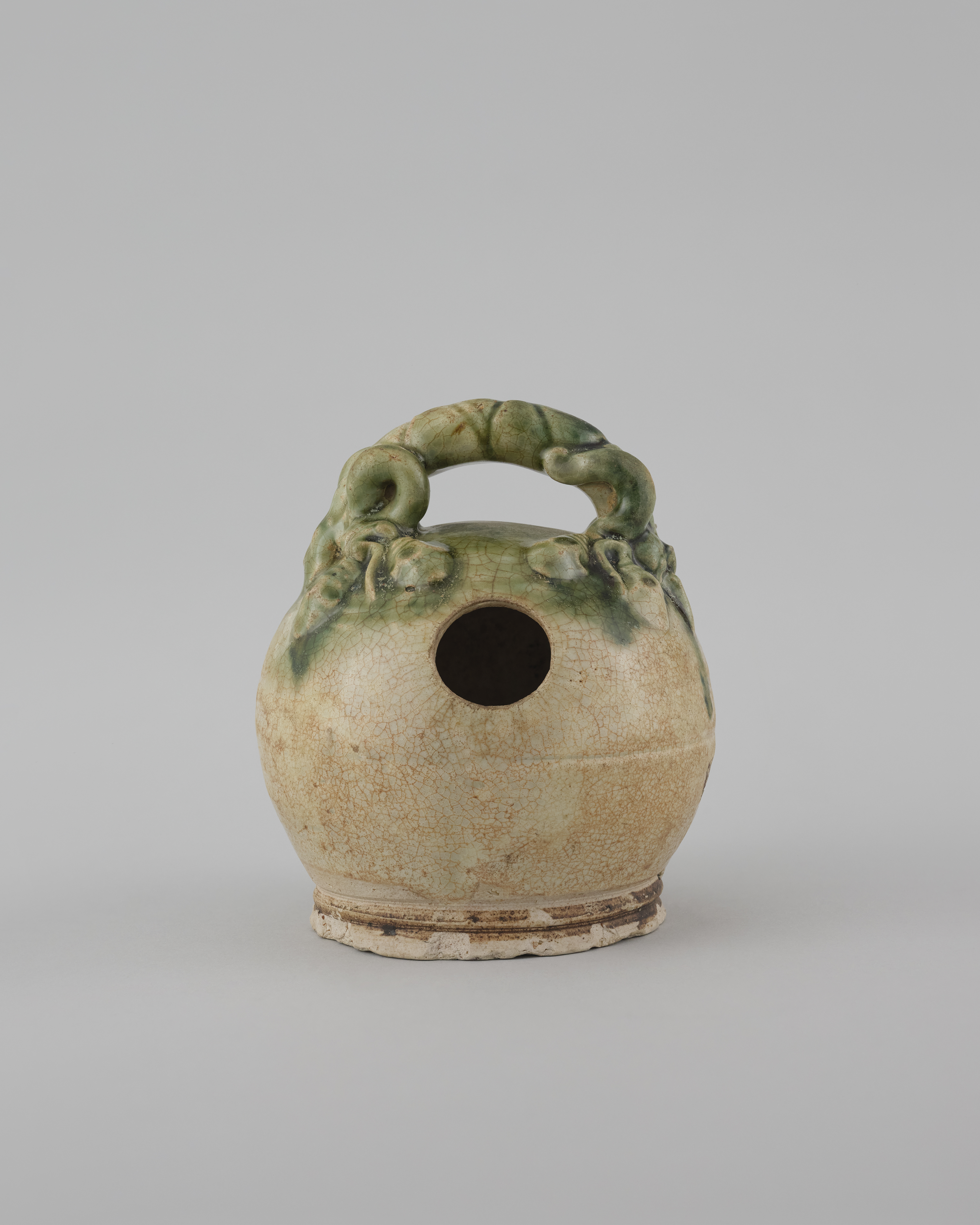
Pot à chaux
Grès
Pot
Don manuel : Huet, Clément
M.C. 8242 A
The custom of chewing betel has been a widespread practice in Vietnam since ancient times, well before the advent of writing and well before the spread of Chinese influence. Three ingredients go into the preparation of the quid, reputed for its stimulant and astringent effects: the areca nut, cut into pieces, is combined with lime (made by heating limestone) and rolled up in a betel leaf, betel being a climbing pepper grown in India and eastern Asia. These pots contained the lime, which was taken out with a small spatula. Their very shape evokes the three ingredients of the betel chew: the round, white body symbolises the stone and the handle is shaped like the areca palm trunk, with the betel vine winding around it. Betel (areca) nuts in relief appear at the base of the handle and spread out over the shoulder of the pot. The betel chewing custom led to the creation of objects related to it, the lime pot being an example. A typically Vietnamese object, it symbolised the whole household and its social life. Long in daily use, it is less common today and has largely disappeared, except in rural areas. If the pot cracked, it was treated with great care, because breaking it was believed to bring bad luck. It was never thrown away and was placed on the altar in the home, in the village or in the pagoda.
